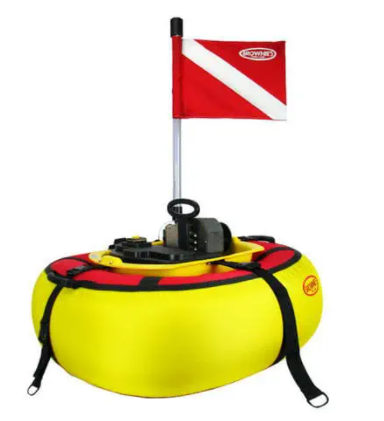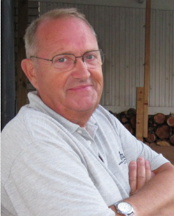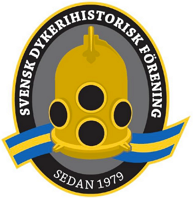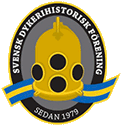In part 9 we take us from 1966 – 1984.
(A good source in creating this chronology has been SPUMS Journal Volume 29 No.2 June 1999. Spums Archive
If you have the right to any of the images used to illustrate the material, please contact us via our contact form, and we will give you credit for the image, or remove it if you wish.
1966 The Society for Underwater Technology, SUT

The Society for Underwater Technology (SUT) is an interdisciplinary organization that unites organizations and individuals with a common interest in underwater technology, marine science, and offshore engineering.
SUT was founded in 1966 and has members from more than 40 countries, including engineers, researchers, other professionals and students working in these areas 128 .
1966 Ron and Valery Taylor

During their careers as sharks defenders, they have managed to protect marine life and underwater environments. Taylor was instrumental in protecting sea lions in New South Wales in 1971. In 2012, the Neptune Islands Group Marine Park was named after Taylor because of their work to protect the oceans.
But despite their life’s work, sharks are still in danger from human activities that threaten a creature that has been in the oceans for more than 400 million years. ”Sharks are part of life’s network,” says Valerie Taylor. ”I have seen the sharks return for 12 years and revive a dead reef.”
In 2019, Valerie Taylor turned 83 and was still active both in diving and giving lectures. 129 .Editorial note. Today, sharks are even more endangered due to Covid19. Several of the vaccine candidates who are developing against Covid19 use the substance squalene. Squalene is basically a natural substance that occurs in a number of plants and animals. In sharks’ livers, the squalene is particularly large. The squalene strengthens the immune system. Deep-sea sharks naturally have most of the squalene. Estimates suggest that the slaughter of up to half a million sharks would be required to protect the world’s population from the viral disease.
1967 Claes Lundgren

Claes Lundgren, born in 1931, was early fascinated by diving and staying underwater. He grew up in Halmstad and studied medicine in Lund. His career as a hyperbaric physiologist and diving physician began at the Department of Physiology at Lund University, where Lundgren studied mechanisms around decompression sickness. A burning interest in technology led to several ideas and patents regarding the improvement of breathing equipment for diving and close collaboration with AGA (now Linde Gas AB), which manufactured breathing apparatus for diving. A study trip to the USA, after the dissertation in Lund in 1967, led to contact with fluid respiration, and a series of experiments were performed on mice after returning to Lund. An offer to conduct research as a professor at the State University of New York at Buffalo, SUNYAB, ten years later led to Lundgren moving to the United States in 1977. Shortly before, Lundgren and colleagues in Sweden had tested nicotine in chewing gum as an aid in smoking cessation. This led to the well-known product Nicorett.
In the United States, work continued on diving medical research at SUNYAB, mainly supported by the US Navy. Several Nordic researchers were invited by Lundgren to SUNYAB as guest researchers. Among the research projects were studies of the physiology of respiratory diving and attempts to find an oxygen-transporting blood substitute based on the type of chemicals that Lundgren used during his studies of fluid respiration in Lund. When the Center for Research and Education in Special Environments, CRESE, was created at SUNYAB in 1985, Claes Lundgren took over as head. In connection with this, Lundgren’s responsibility and research area were expanded from diving to also include other areas of extreme physiology such as spacewalks, high G-forces, and thermophysiology.
Claes Lundgren remained as manager until his retirement in 2007 and has since been active as emeritus 130, 131. .
1970 SI Tech, Stig Insulán

1970-talet, Hookah-diving


1971 Jim

Jim became the successor to Joseph Perres Tritonia from 1931 and was manufactured by DHB Construction Ltd.
Jim also became the most famous ”Atmospheric Diving System”, ADS. The name, Jim, which was a tribute to Tritonia’s most diver, Jim Jarret, became a double issue. It gave the ADS a personality and it could seem a little demoralizing to the operator. After all, most people want to have ”a pat on the back” and hear that, ”you did that well”, but in the case of Jim, it was usually Jim who got the credit and the diver who actually both performed the task and had the courage to test the limits, came into the shadows. The second problem was that even the designers got into trouble sometimes when they talked about ”Jim” because there were several different versions. Below is a description of the main differences listed. Type 1 (Jim). The original ”Jim” prototype with cast magnesium/aluminum body. Type 2 (Jim). A modified type of ”Jim” but built in the same material.Type 3 (Sam). A smaller, more compact version of ”Jim” with an aluminum body and modified joints.
Type 4 (Sam). Redesign of ”Sam” and with a fiberglass body.
In addition, the Wasp was manufactured, a device that had a tubular part under the body section rather than articulated legs and was powered by water jet engines (in the other models, it was the operator’s leg movements that moved the ADS). Jim was built with the needs of the oil industry in mind, but they were not particularly interested. It was not until the American company Oceaneering bought DHB Construction and all the rights to Jim that it began to gain momentum, but only after a number of ”test jobs” were done with Jim, including the Arctic, in 1976, where the water temperature was -1.6 degrees and the temperature inside Jim was +10. The following year, Jim got 35 jobs and was successful in the offshore industry for several years. In 1979, Jim set a depth record of 381 meters with oceanographer Sylvia Earle as the operator. In 1981, a total of 19 Jim had been built.Competition from Wasp was intensified and since 1989 Jim has not been used in commercial work.
Jim also had a couple of film roles. The first in the 1981 James Bond movie ”For Your Eyes Only” (Jim plays the villain). In addition, Jim had a relatively large role in the sci/fi horror film Deepstar six 1989 134 .1977 Hans Örnhagen

Since retiring in 2004, we meet Örnhagen as a lecturer in diving medicine, consultant for companies in the diving industry and telephone consultant in diving medicine, but also as active in the Swedish Scuba Diving Association 1981 – 2019 and in the Swedish diving history association SDHF. Örnhagen was involved in saving Dyktankhuset from demolition in 1979 and was the association’s chairman from 1979 to 2008 and was appointed an honorary member in 2014 135 .
1979 Svensk DykeriHistorisk Förening, SDHF

Swedish Diving History Association, SDHF, is the world’s oldest diving history association. It was formed in 1979 with the aim of saving the old dive tank house at Galärvarvet in Stockholm. Hans Örnhagen was elected chairman and Bo Cassel secretary. They succeeded in their task and today Dyktankhuset is a museum run by SDHF that houses the association’s collections of all kinds of diving equipment 136 .
1983 Interspiro

The company AGA started in 1904 with the manufacture of lighthouse equipment. The company expanded its operations early on from navigation aids and gas to a number of related products, including regulators to save gas in AGA’s lighthouses.
In the late 1940s, AGA developed a breathing valve with inhalation and exhalation in the same diaphragm. The valve is exposed to the same pressure, which reduces breathing effort by reducing the pressure difference.
In 1954, the NK department store in Stockholm decided to launch a range for scuba diving. For the regulator, they turn to AGA. The regulator was designed and given the name Divator, better known as the ”tea-strainer” both inside and outside the company. In 1961, the company, with experience from the Aviatic respirator for the aviation industry, developed a full face mask with safety pressure. This is now standard on most full-face masks. In 1963, a fog-free full-face mask is introduced. The effect is achieved by blowing dry air against the inside of the glass. 1965 The 300-bar bottle system is introduced, which means that the bottles can be made smaller. In 1969 came the ACSS (Alternative Closed Semi-Closed Breathing System, ie fully or semi-closed early type of rebreather) which provides a mechanically controlled diving apparatus for gas mixing. Four years later, radio communications are incorporated into certain systems. In the same year, the reserve air system is developed. In 1974, Interspiro developed an octopus system In 1983, AGA tightened its corporate portfolio and Interspiro left the AGA Group.In 1987, a fresh air hatch was introduced on the full face masks, to be used in surface mode
In 1996, a computerized self-test system for the air system is introduced.
2003 introduces a new type of hose for diving with air supply from the surface. The hose is of the high-pressure type and functions both as an air supply and a safety line. The company has previously designed composite bottles for smoke diving, in 2004 an integrated weight system was developed for them so that they can also be used for water diving 137 .
1984 Phil Nuytten

References
128. SUT. Visited 20200503.
129. Ron och Valery Taylor. Visited 20200502.
130. Via Hans Örnhagen
131. Claes Lundgren. Visited 20200502.
132. Stig Insulán. Visited 2020 05 02.
133. Hookahdiving. Visted 20200701.
134. Jim. Visited 20200501.
135. Via Hans Örnhagen
136. Svensk DykeriHistorisk Förening, SDHF. Visited 20200501.
137. Interspiro. Visited 20200501.
138.Phil Nuytten Visited 20200426.
